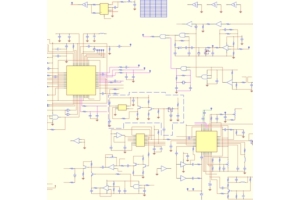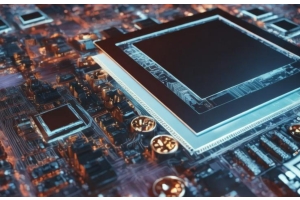According to a report by Fact.MR, the global SiC (Silicon Carbide) and GaN (Gallium Nitride) power semiconductor market is projected to grow from $1.41 billion in 2024 to $11.08 billion by 2034, at a compound annual growth rate (CAGR) of 22.9%. These semiconductors are highly suitable for high-temperature and high-frequency applications, making them widely used in automotive, renewable energy, industrial, and consumer electronics sectors.
Automotive Applications
In the automotive sector, SiC and GaN power semiconductors are integral to the production of energy-efficient electric and hybrid vehicles. Their efficient energy conversion capabilities make them suitable for renewable energy inverters and motor drives in industrial environments. Continuous research and development activities worldwide are expected to further enhance the functionalities of these semiconductors. Fact.MR notes, "The trend towards miniaturization in consumer electronics is a key driver for high demand."
Innovation and Acquisitions to Boost Supply
The SiC and GaN power semiconductor market is highly competitive. Industry giants are adopting product expansion strategies, including mergers and acquisitions, to increase supply and market influence. For instance, in October 2023, Infineon Technologies AG announced the acquisition of GaN Systems. Similarly, in 2023, Japan's Flosfia began supplying power chips made from gallium oxide, which offer higher efficiency than GaN and SiC.
Regional Dynamics: Automotive and Renewable Energy Sectors
In the United States, SiC and GaN power semiconductors have become essential in automotive manufacturing, driven by stringent regulations on automotive safety and greenhouse gas emissions. As manufacturers strive to incorporate fuel-efficient components, the adoption rate of SiC and GaN power semiconductors in automotive systems has surged. Their high energy efficiency is crucial in enhancing the performance of electric vehicle power systems.
As a result, the US market for SiC and GaN power semiconductors is expected to grow at a CAGR of 23.4%, from $149.9 million in 2024 to $1.22 billion by 2034. Meanwhile, China is emerging as a major hub for semiconductor manufacturing. The country's robust production capacity and significant exports of consumer electronics are driving the demand for SiC and GaN power semiconductors. Additionally, the increasing prevalence of renewable energy systems like solar panels and distributed energy storage is boosting the use of these semiconductors in production. The growing trend towards industrial automation further propels the market growth in China, which is expected to grow at a CAGR of 22.9%, from $154.4 million in 2024 to $1.21 billion by 2034.
SiC Power Modules to Reach $3.64 Billion in Sales by 2034
Among various semiconductor materials used in power modules, silicon carbide is the most preferred due to its ability to minimize energy loss during power conversion. This inherent advantage reduces the dependence on expensive cooling systems, making SiC increasingly the material of choice for semiconductor buyers. Another notable advantage of SiC power modules is their extremely low switching losses, particularly in applications like EV chargers and solar inverters. This technological edge further drives manufacturers to expand their product offerings and market share.
These trends indicate that the demand for SiC power modules will continue to surge over the next decade, with sales projected to grow at a CAGR of 22.6%, from $476.3 million in 2024 to $3.64 billion by 2034.





